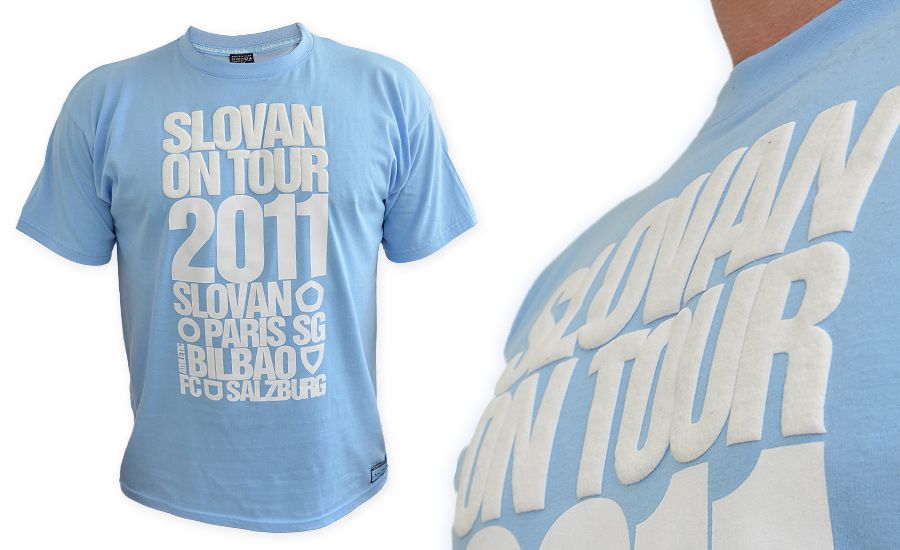
Puff printing is a specialized fabric printing technique that adds a unique, three-dimensional texture to designs. By using a special additive in the ink, puff printing allows the ink to “puff up” and create a raised effect when heat is applied. This method is popular for its eye-catching texture, often used on t-shirts, hoodies, and other apparel to add depth and an intriguing tactile quality to designs. In this guide, we’ll go through the complete process of puff printing on fabric, including the materials, steps, and tips for achieving the best results.
What is Puff Printing?
Puff printing is a screen printing method that uses an ink mixed with a puff additive. When heat is applied, this additive causes the ink to expand, creating a raised or “puffed” texture on the fabric. Puff printing is especially popular for simple, bold designs, as the technique emphasizes the design’s lines and shapes in a visually and physically appealing way.
Advantages of Puff Printing
The puff printing method offers some distinct advantages:
- Unique Texture: The raised, soft texture provides a unique sensory experience.
- Durability: Puff prints are known for their long-lasting effect; once set, the design is durable and can endure regular wear and washing.
- Versatility: Puff printing works well with a variety of fabrics, including cotton, polyester, and blends, and is especially effective for fashion-focused or sportswear applications.
Essential Materials for Puff Printing
To get started with puff printing on fabric, you’ll need specific materials and equipment:
- Puff Ink: This ink contains a special additive that allows it to expand when heat is applied. Puff inks come in various colors, and some inks allow for customization by adding more puff additives.
- Screen Printing Screens: As with traditional screen printing, puff printing requires a mesh screen to apply the ink. A higher mesh count screen (around 110-156) is usually ideal for puff printing.
- Squeegee: A squeegee is used to evenly spread the ink across the screen and push it through the mesh onto the fabric.
- Heat Source: A heat press or a flash dryer is essential for curing the ink and activating the puff additive. Heat guns can also work for smaller projects but may not provide even heat distribution.
- Fabric: Puff printing is compatible with most natural and synthetic fabrics. However, always test new fabric types, as the puff effect may vary depending on the material’s thickness and texture.
The Puff Printing Process
Puff printing involves a few specific steps, from preparing the design to applying heat. Here’s a breakdown of each stage:
1. Preparing the Design
Puff printing works best with bold, simple designs, such as block text or graphics with defined shapes. Complex or highly detailed designs may not translate well because the puff effect can cause smaller details to merge. Use graphic design software like Adobe Illustrator or Photoshop to create or refine your design. Remember to separate each color in the design into individual layers if it includes multiple colors.
2. Creating the Screen
Each color in your puff design will require a separate screen, as with traditional screen printing. Follow these steps to prepare the screen:
- Coat the Screen with Emulsion: Apply a layer of photosensitive emulsion to the screen and allow it to dry in a dark room.
- Expose the Screen: Place the design on a transparency film, overlay it on the screen, and expose it to light. The areas covered by the design will block the light, leaving a stencil after the screen is rinsed with water.
3. Setting Up the Printing Station
Set up a clean, flat surface to work on. Secure the fabric (usually a t-shirt, hoodie, or other apparel item) onto a platen to keep it steady. Align the screen carefully over the fabric to ensure the design is positioned correctly. If working with multiple colors, use registration marks to align each screen for precise placement.
4. Applying Puff Ink
Once everything is in position, it’s time to apply the puff ink:
- Load the Ink: Place a small amount of puff ink at the top of the screen.
- Spread the Ink with a Squeegee: Using a squeegee, pull the ink down across the screen with consistent pressure. This pushes the ink through the mesh and onto the fabric, covering the areas defined by the stencil.
- Lift the Screen: Carefully lift the screen to reveal the printed design on the fabric. For designs with multiple colors, allow each layer to dry before moving on to the next color screen.
5. Curing the Ink and Activating the Puff Effect
The curing stage is critical for puff printing, as this is where the ink will expand to create the desired effect:
- Apply Heat: Use a heat press or flash dryer to apply heat to the printed design. The temperature and duration will depend on the type of puff ink you’re using, but typically around 320°F (160°C) for 10-15 seconds works well.
- Watch the Puff: As heat is applied, you’ll see the ink begin to expand and puff up. Ensure that the entire design is evenly exposed to heat for a consistent puff effect across the fabric.
- Let It Cool: After heating, allow the fabric to cool before handling. This helps set the puffed design in place.
Tips for Successful Puff Printing
Achieving the best results with puff printing requires a bit of practice and attention to detail. Here are some helpful tips:
- Test on Sample Fabric: Different fabrics can produce varied puff effects. Testing on a sample piece helps you adjust the heat and pressure settings before working on your main project.
- Use Consistent Pressure: Applying even pressure with the squeegee ensures consistent ink distribution, which is essential for a uniform puff.
- Adjust Puff Additive: Some puff inks allow for adjustment by adding more puff additive, giving you control over the height and softness of the puff effect.
- Avoid Overheating: Excessive heat can cause the puff effect to shrink back or distort. Stick to the recommended curing temperature for the ink you’re using.
- Clean Screens Regularly: Puff ink can be thicker than regular screen printing ink, which means it can clog screens more easily. Clean your screens after each use to maintain their longevity.
Common Challenges and Solutions in Puff Printing
While puff printing is a straightforward technique, there are some challenges that may arise:
- Uneven Puffing: If parts of your design puff unevenly, it could be due to inconsistent heat application. Use a heat press or flash dryer for better control over temperature and distribution.
- Ink Bleeding: If the ink spreads outside the stencil area, check your screen’s mesh count or use a finer mesh. Reducing squeegee pressure can also help control ink flow.
- Fading or Cracking: If the puffed design fades or cracks after washing, it may not have been properly cured. Be sure to follow the recommended curing times and temperatures for the best results.
Conclusion
Puff printing is a versatile and creative way to add texture and depth to fabric designs. By following the right steps and using high-quality materials, you can create unique, raised prints that stand out. Perfect for bold, simple designs, puff printing is a fantastic option for those looking to add a three-dimensional effect to their custom apparel. With practice and the right techniques, puff printing can elevate your fabric projects, making them both visually appealing and durable.












